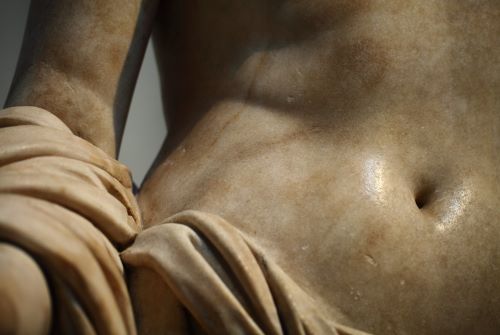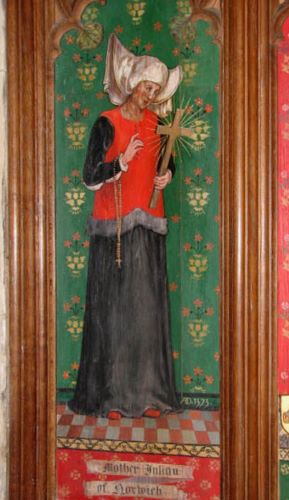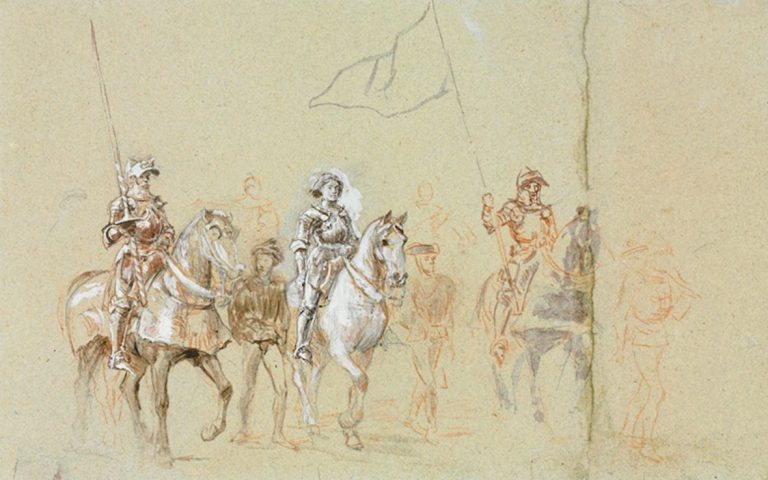

It illustrates how pseudoscientific beliefs were woven into the most fundamental human experiences.

By Matthew A. McIntosh
Public Historian
Brewminate
Introduction
Among the many divinatory practices that flourished in the ancient world, few are as obscure and symbolically rich as omphalomancy—the interpretation of the navel or umbilical cord to divine future outcomes. While more prominent pseudosciences like astrology, alchemy, and physiognomy captured the cultural and philosophical imagination of antiquity, omphalomancy operated on the margins: a quiet, intimate ritual often conducted by midwives or seers at the moment of birth. Here I examine the historical roots, symbolic associations, and cultural significance of omphalomancy in ancient societies, situating it within broader systems of magical thinking and divinatory practice.
The Ritual Origins of Omphalomancy
Omphalomancy derives from the Greek omphalos (navel) and manteia (divination), and refers specifically to the reading of signs from a child’s navel or umbilical cord. It was most often performed shortly after childbirth, when the umbilical cord was still freshly detached and believed to retain spiritual energy linking the infant to the mother—and by extension, to the metaphysical order.
Though few ancient texts directly describe omphalomancy by name, its presence can be inferred through folk practices, later medieval manuscripts, and comparative anthropology. In ancient Greece, the navel was imbued with cosmological meaning: the omphalos stone at Delphi, said to mark the center of the world, became a powerful symbol of divine connection.1 In a culture that regarded the body as a microcosm of the universe, the navel—being the literal point of life’s origin—was a fitting site for prophecy.
In Mesopotamian and Near Eastern societies, where omen-literature such as the Enuma Anu Enlil cataloged the meaning of everything from liver shapes to celestial movements, it is likely that the umbilical cord was included in household or birthing rituals that went unrecorded in elite texts.2 Given the sacred nature of birth and the pervasive belief in fate (šīmtu), midwives may have engaged in cord-reading as part of their duties, blending domestic care with mystical knowledge.
Symbolism of the Navel and Umbilical Cord

The umbilical cord was not merely a physical appendage—it was a liminal object, bridging the material and the divine. In many ancient cultures, the moment of birth was considered a threshold between worlds: the baby emerged from the inner sanctum of the mother’s womb into the outer world, and the umbilical cord, as the tether between those realms, carried symbolic weight.
In Hellenistic philosophy and medical thought, the body was often viewed as a map of character and destiny. Just as physiognomists would analyze facial features to deduce temperament, some believed that features of the navel—its depth, shape, or folds—might reveal truths about a person’s future.3 The cord, in particular, was said in some traditions to indicate how many siblings the newborn would eventually have, based on the number of knots or rings in the cord. A single knot might foretell a lone sibling; multiple rings could signal a large family. Other interpretations posited that a malformed or twisted cord could indicate future suffering or misfortune.
The belief also carried implications for the role of women and midwives in divination. While oracles and seers were typically male and associated with temples or civic life, omphalomancy was a private, often feminine ritual. Midwives, guardians of birth, occupied a unique position: not only delivering life but also offering glimpses into its potential trajectory. Their interpretations may have shaped a family’s expectations, emotional bonds, and even future decisions about childbirth or inheritance.4
Omphalomancy and the Broader Pseudoscientific Landscape

Omphalomancy belongs to a wide array of ancient pseudosciences that sought to extract cosmic meaning from physical signs. Like haruspicy (the reading of animal entrails) and palmistry (the reading of hands), it was rooted in the idea that nature encoded divine intention within the flesh. Unlike these more public or formal practices, however, omphalomancy’s intimacy and maternal context set it apart. It was not a practice to be performed before kings or assemblies, but in homes and nurseries—spaces often left out of official historiography.5
Yet, the significance of omphalomancy must not be dismissed simply because of its private nature. It represents a rare case in which the female body—so often silenced or objectified in ancient discourse—became a source of knowledge and foresight. The mother’s body, through the cord, communicated hidden truths about the child’s destiny. In this sense, omphalomancy was a form of maternal mysticism, affirming the sacredness of motherhood while reinforcing cultural anxieties about birth, mortality, and the uncontrollable forces that governed human life.
While modern science rejects any causal connection between umbilical cord features and future events, the persistence of this practice into the Middle Ages and beyond—particularly in rural folk medicine—suggests that it met deep psychological and social needs.6 In times when infant mortality was high and reproductive uncertainty loomed, omphalomancy offered a fragile semblance of control: a ritualized gesture toward order amid chaos.
Conclusion
Omphalomancy is a window into the ancient world’s complex relationship with the body, the cosmos, and the mystery of human life. Though little known today, it illustrates how pseudoscientific beliefs were woven into the most fundamental human experiences—not just among priests and scholars, but in the hands of mothers and midwives. In divining the future from a newborn’s cord, ancient people sought not only answers but also meaning, reassurance, and continuity in the face of life’s uncertainties.
In its quiet way, omphalomancy reminds us that science and pseudoscience are not only systems of knowledge but also expressions of hope, fear, and imagination—the very qualities that continue to animate our quest for understanding today.
Appendix
Endnotes
- E. R. Dodds, The Greeks and the Irrational (Berkeley: University of California Press, 1951), 58.
- A. Leo Oppenheim, Ancient Mesopotamia: Portrait of a Dead Civilization (Chicago: University of Chicago Press, 1977), 203–205.
- Ralph M. Rosen, Physiognomics and the Meaning of Expression in Antiquity (Cambridge: Cambridge University Press, 1999), 45–48.
- Katharine Park, Secrets of Women: Gender, Generation, and the Origins of Human Dissection (New York: Zone Books, 2006), 84–90.
- Christopher A. Faraone and Dirk Obbink, eds., Magika Hiera: Ancient Greek Magic and Religion (Oxford: Oxford University Press, 1991), 130–135.
- Lorraine Daston and Katharine Park, Wonders and the Order of Nature, 1150–1750 (New York: Zone Books, 1998), 75–78.
Bibliography
- Daston, Lorraine, and Katharine Park. Wonders and the Order of Nature, 1150–1750. New York: Zone Books, 1998.
- Dodds, E. R. The Greeks and the Irrational. Berkeley: University of California Press, 1951.
- Faraone, Christopher A., and Dirk Obbink, eds. Magika Hiera: Ancient Greek Magic and Religion. Oxford: Oxford University Press, 1991.
- Oppenheim, A. Leo. Ancient Mesopotamia: Portrait of a Dead Civilization. Chicago: University of Chicago Press, 1977.
- Park, Katharine. Secrets of Women: Gender, Generation, and the Origins of Human Dissection. New York: Zone Books, 2006.
- Rosen, Ralph M. Physiognomics and the Meaning of Expression in Antiquity. Cambridge: Cambridge University Press, 1999.
Originally published by Brewminate, 06.27.2025, under the terms of a Creative Commons Attribution-NonCommercial-NoDerivatives 4.0 International license.


